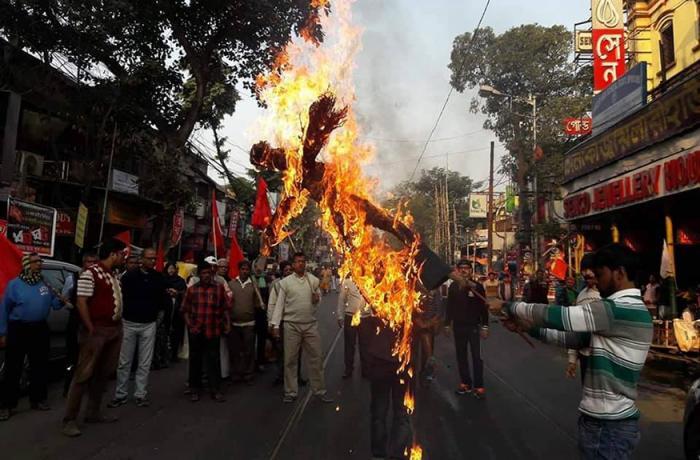In what may be the largest worker strike in history, last week India came to a halt for two days when at least 200 million workers – about 16% of India’s 1.25 billion population – in the country’s public, services, communications and agriculture sectors staged a strike across the country organized by ten labor unions against what they called the anti-national and anti-worker policies of the BJP-led government, and against a new labor law that would undermine the rights of workers and unions.
The strike is a protest against new legislation that passed on 2 January, and is a de facto verdict on Prime Minister Narendra Modi providing an opportunity for millions of workers to protest against high prices and high levels of unemployment, something we touched upon in “The Indian Railway System Announced 63,000 Job Openings… 19 Million People Applied.”
John Dayal, general secretary of the All India Christian Council, told AsiaNews that the event was exceptional, “one of the largest ever organised in the country, planned in advance in every detail.” In his view, the most important thing is that it “is taking place on the eve of general elections that will mark the fate of the prime minister”.
While the massive strike took place in an overall context of calm, there were numerous incidents confirming that social anger in the world’s second most populous nation is also approaching a breaking point: protesters blocked several cities, clashes broke out and damage were reported; a 57-year-old woman died in in Mundagod, a city in northern Karnataka, during a local protest. In Maharashtra more than 5,000 workers blocked the Mumbai-Baroda-Jaipur-Delhi highway. In Puducherry (Pondicherry), on the east coast, protesters hurled stones at a Tamil Nadu state bus. Transport services closed and rail services were disrupted in Kerala. In Odisha (Orissa), shops, schools, offices and markets shut down for 48 hours. In West Bengal, protesters burnt effigies of Prime Minister Modi.
…click on the above link to read the rest of the article…
